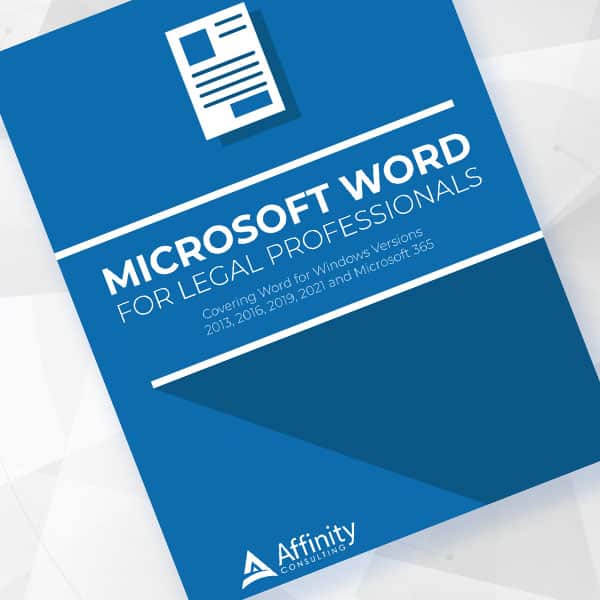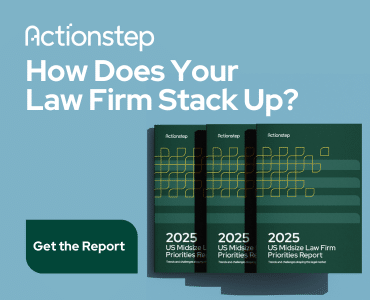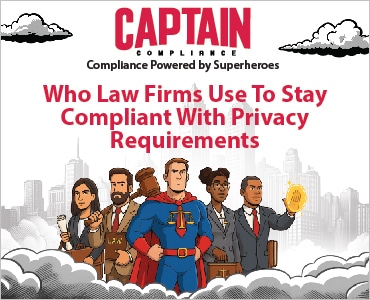Don’t believe legal AI myths. Get the facts about artificial intelligence in your law firm and make informed decisions.
Table of contents
- AI Myth No. 1: “AI Will Replace Lawyers”
- AI Myth No. 2: “AI Is Too Risky for Legal Work”
- AI Myth No. 3: “You Need to Be a Tech Expert to Use AI”
- AI Myth No. 4: “Using AI Could Get Me in Trouble With the Bar”
- AI Tools Lawyers Are Actually Using Right Now
- About Affinity Consulting Group
- More Tech Tips From Danielle DavisRoe
- More Office 365 Training Manuals for Lawyers
You’ve heard the buzz. Maybe you’ve even tested out ChatGPT for fun or sat through a vendor pitch promising the future of legal work. But when it comes to artificial intelligence in your law firm, it’s hard to know what’s fact, what’s fiction — and what’s worth your time. Let’s clear the air.
AI tools are getting better (and more accessible) every day, but they’re not here to replace lawyers. They’re here to help — if you know what they can actually do. So let’s unpack a few of the biggest legal AI myths I hear and talk about where it really fits into your practice.
AI Myth No. 1: “AI Will Replace Lawyers”
Nope. Not even close.
AI tools like Copilot (Microsoft’s AI assistant) or ChatGPT can generate content quickly, but they don’t understand context, nuance or the law. They don’t apply judgment. They don’t know your client. And they definitely don’t go to court.
But they can speed up the busy work that eats up your day.
What It Can Do:
- Draft a first pass at a contract clause or client letter.
- Summarize deposition transcripts or meeting notes.
- Offer ideas for how to phrase a tricky paragraph.
You’re still the one in charge. AI just helps get you to a solid starting point faster.
AI Myth No. 2: “AI Is Too Risky for Legal Work”
Used the wrong way? Sure — there are real concerns. AI can generate inaccurate information (“hallucinate”), and using public tools with sensitive data is a no-go. But most of those risks can be managed with a little common sense and the right tools.
What It Can Do Safely:
- Draft internal templates.
- Help summarize long documents.
- Assist with time entries or case notes (with your review, of course).
Stick to platforms you trust — especially tools already built into your Microsoft 365 environment — and you’re on much safer ground than pasting client info into random websites.
AI Myth No. 3: “You Need to Be a Tech Expert to Use AI”
Definitely not. If you can use Word or Outlook, you can use AI.
Microsoft’s Copilot is built into the tools you’re already using.* You don’t need to learn a new system — just type in what you want: “Summarize this email thread.” “Rewrite this to sound more professional.” It’s that easy.
What It Can Do Easily:
- Rephrase an email in a different tone.
- Pull out action items from a Teams meeting.
- Condense a wall of text into a quick summary.
You don’t have to become a tech guru — just be open to trying it out.
*Copilot requires an extra subscription to use in some applications.
AI Myth No. 4: “Using AI Could Get Me in Trouble With the Bar”
This is a fair concern, but using AI doesn’t mean you’re violating your professional duties — as long as you use it responsibly.
The ABA and several state bars have issued guidance: Supervise the output. Protect client confidentiality. Use your judgment. Sound familiar? That’s the same standard you apply to staff or contractors.
What You Should Do:
- Don’t paste sensitive client info into public AI tools.
- Always double-check AI-generated content.
- Stay current with your state’s ethics guidance.
AI Tools Lawyers Are Actually Using Right Now
Not sure where to start? These tools are already making a difference in law firms:
- Microsoft Copilot — works right inside Word, Outlook, Excel and Teams.
- Grammarly or BriefCatch — for polishing your writing.
- Otter.ai or Fathom — record and summarize meetings in seconds.
- Legal DMS platforms — like NetDocuments or iManage, which are starting to add AI-powered search and tagging features.
Start with something low-stakes — like rewriting a draft or summarizing an internal meeting — and build from there.
Related reading: “Using ChatGPT to Audit Your Tech Stack (and Save Money).”
Want other ways to get more out of the software you use every day?
Check out Affinity Consulting Group’s legal specific software manuals.
About Affinity Consulting Group
Affinity Consulting Group inspires, enables and empowers legal teams of all sizes to work smarter, from anywhere. The company’s holistic approach incorporates people, process and technology. Affinity’s passionate, well-connected industry experts work hand in hand with you to help you better understand and optimize your business — from software to growth strategy, and everything in between.
More Tech Tips From Danielle DavisRoe
- Law Firm Tech Cleanup: 6 Steps to Boost Efficiency and Cut Costs Now
- 15 Secure Collaboration Hacks Every Lawyer Should Know
- 25 Quick Tech Tips to Try in 2025
- 6 Ways Microsoft Word Speech-to-Text AI Can Help You Write Faster and Better
- PDF Bookmarks: The Secret to Quickly Creating User-Friendly Documents
- Never Forget to Follow Up: Using Outlook Email Reminders
- Templates to Create Model Documents That Save Your Law Firm Tons of Time
- Paperless Law Practice: How to Boost Efficiency, Cut Costs and Improve Client Satisfaction
- Take Your Practice to the Next Level With Document Automation Tools
- How to Master Page Numbers in MS Word

Microsoft Word for Legal Professionals
Want to work faster? For in-depth information and instructions on getting the most from Word, order Affinity Consulting Group’s hands-on digital manual “Microsoft Word for Legal Professionals.” Individual and site licenses are available for download in the Attorney at Work bookstore.
More Office 365 Training Manuals for Lawyers
Check out Affinity Consulting Group’s “Excel for Legal Professionals,” “Outlook for Legal Professionals” and “PowerPoint for Legal Professionals.” Each manual zeros in on your practice’s needs with in-depth instructions from Affinity experts on getting the most out of your tech.
Image © iStockPhoto.com.

Sign up for Attorney at Work’s daily practice tips newsletter here and subscribe to our podcast, Attorney at Work Today.
















